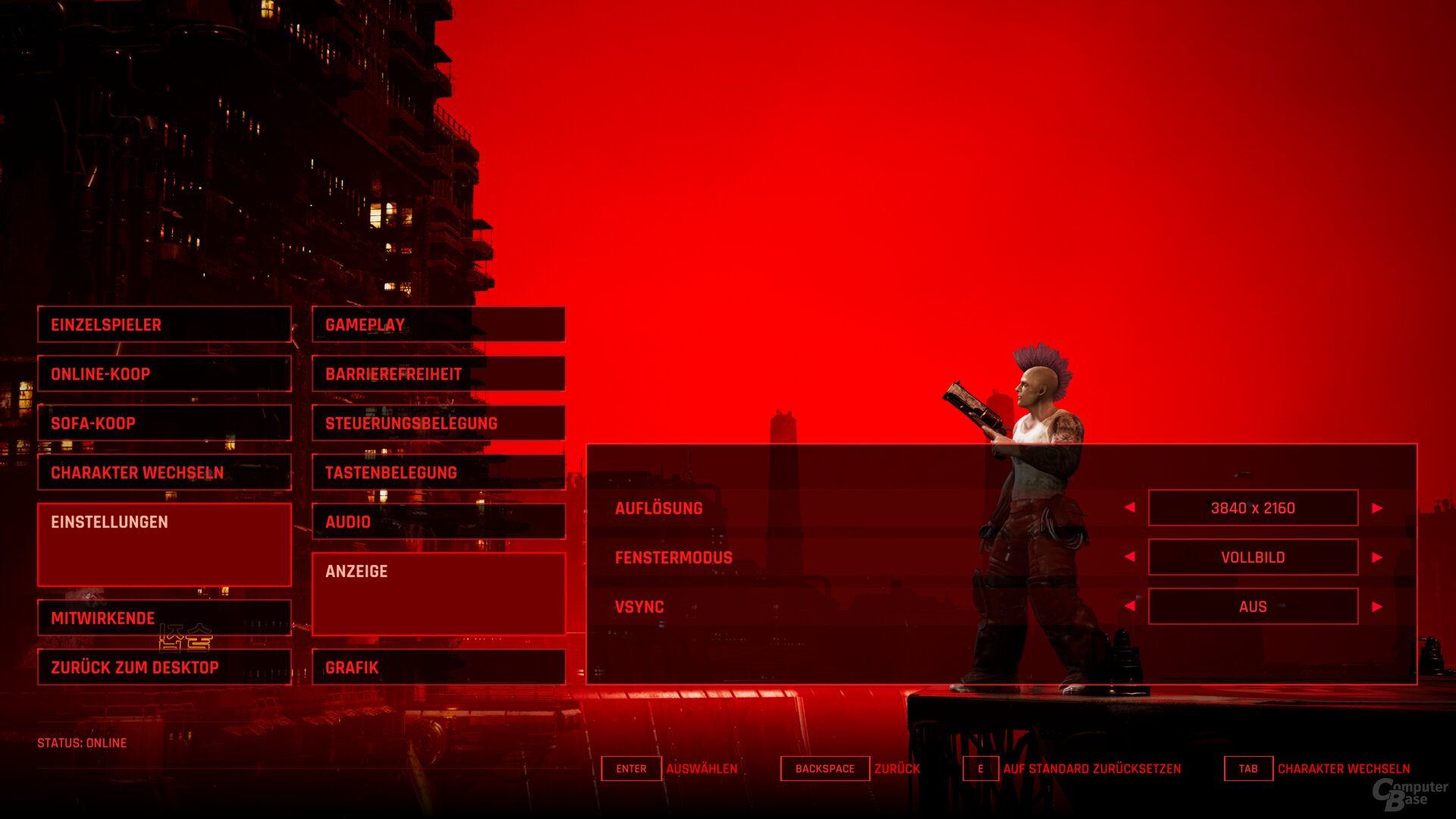The Ascent is like Diablo with firearms, direct controls and fancy graphics, because it looks really good in places. One reason for this is ray tracing, which raises the optics a little higher, but sometimes also costs a lot of performance. The used Unreal Engine 4 also shows a weakness.
Table of contents
- 1 Really nice, but with ray tracing GPU eater
- The graphics menu is long but simple
- 2 Raytracing and DLSS in The Ascent
- The RT reflections are chic , but also have slight weaknesses
- The performance of ray tracing
- DLSS is in good shape, but also has weaknesses
- The performance of DLSS
- 3 benchmarks (FHD, WQHD, UHD), DX11 vs. DX12 and frame times
- The test system and the benchmark scene
- DirectX 12 is significantly faster than DirectX 11
- Benchmarks without ray tracing in Full HD, WQHD and Ultra HD
- Benchmarks with ray tracing in Full HD, WQHD and Ultra HD
- No big outliers in frame times, but strong stutters
- The Ascent “doesn't need” VRAM
- 4 Game review and conclusion
- How good is The Ascent?
- Conclusion
Even if real graphics blasts are almost entirely handled by large AAA studios for resource reasons, there are games by small developers from time to time that amaze you as well. Kena: Bridge of Spirits, which will be released in September, comes to mind and The Ascent is definitely one of them.
The Ascent is developed by Neon Giant, a Swedish team made up of just a double-digit number of employees. The title attracts a lot of attention not only with its gameplay, because the action role-playing game is ultimately a kind of Diablo with direct controls and firearms. The really nice-looking trailers and screenshots also contributed.
The Ascent takes place in the cyberpunk universe and optically takes full advantage of this. The look is kept in a mixture of “dirty” and “motley”, everywhere there are large, glowing billboards, lots of rain, very effective weapon effects and a really successful atmosphere throughout. Even if you notice in the graphics alone with the numerous restrictions such as the fixed camera perspective typical for top-down shooters, the less complex animations and much more that there is not a large team with a lot of budget behind the development, the visual impression does that no termination. The Ascent just turned out to be a really nice game.
Neon Giant implemented the project with the Unreal Engine 4, whereby not only the DirectX 11, but also the DirectX 12 renderer can be selected. To give the graphics quality a further boost, The Ascent supports ray tracing on GeForce RTX and Radeon RX 6000 graphics cards, which is used for shadows, ambient obscuration and reflections. DLSS can also be activated on corresponding Nvidia models.
The graphics menu is long but simple
The Ascent has a simple graphics menu on the PC, with many individual switches, but ultimately not too much can be set. The game doesn't even have graphics presets, instead there are six individual options with which the level of detail can be changed.
Accordingly, there is no FPS limiter, no example – Screenshots, no descriptions of the options or other comfort options available. After all, upsampling made it into the game (50 to 100 percent resolution in steps of 1). Downsampling, however, is missing.
-
 The graphics menu of The Ascent
The graphics menu of The Ascent
Image 1 of 3
 The Ascent's graphics menu
The Ascent's graphics menu  The Ascent's graphics menu
The Ascent's graphics menu Between DirectX 11 and DirectX 12 can be changed directly in the graphics menu and ray tracing and DLSS can also be configured there. On the positive side, with the exception of an API change, all options are accepted without restarting the game.
On the next page: Raytracing and DLSS in The Ascent

